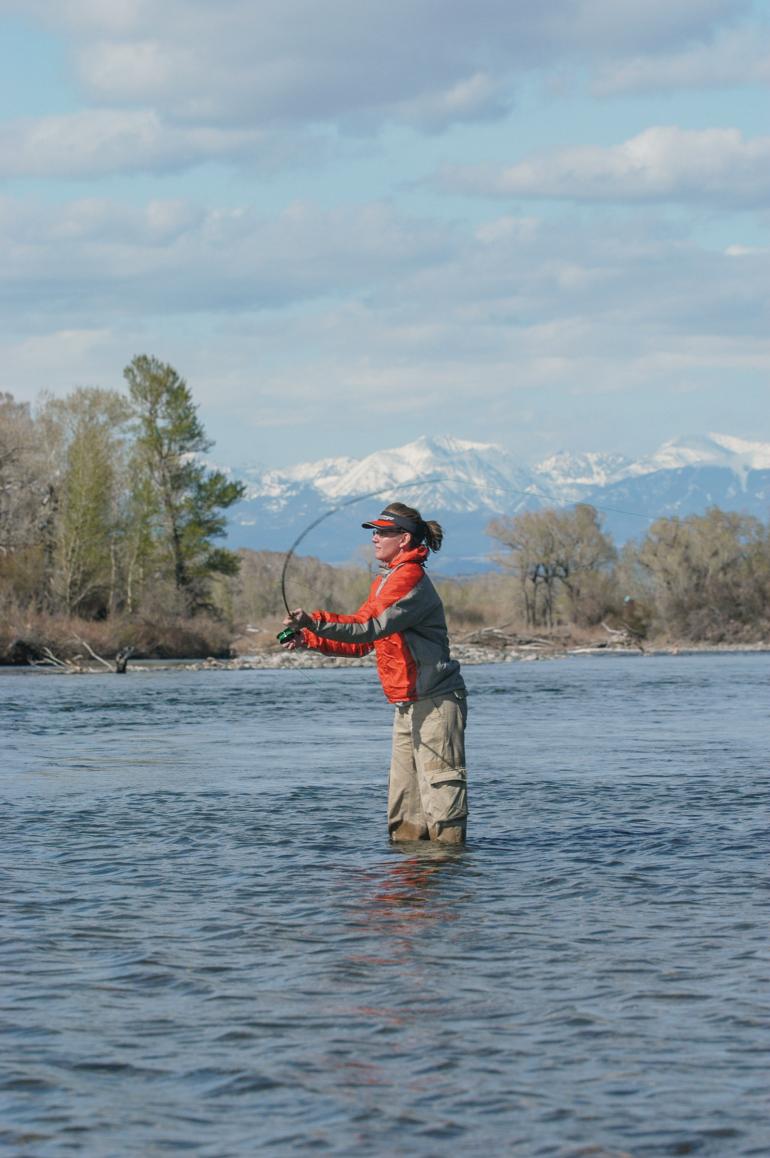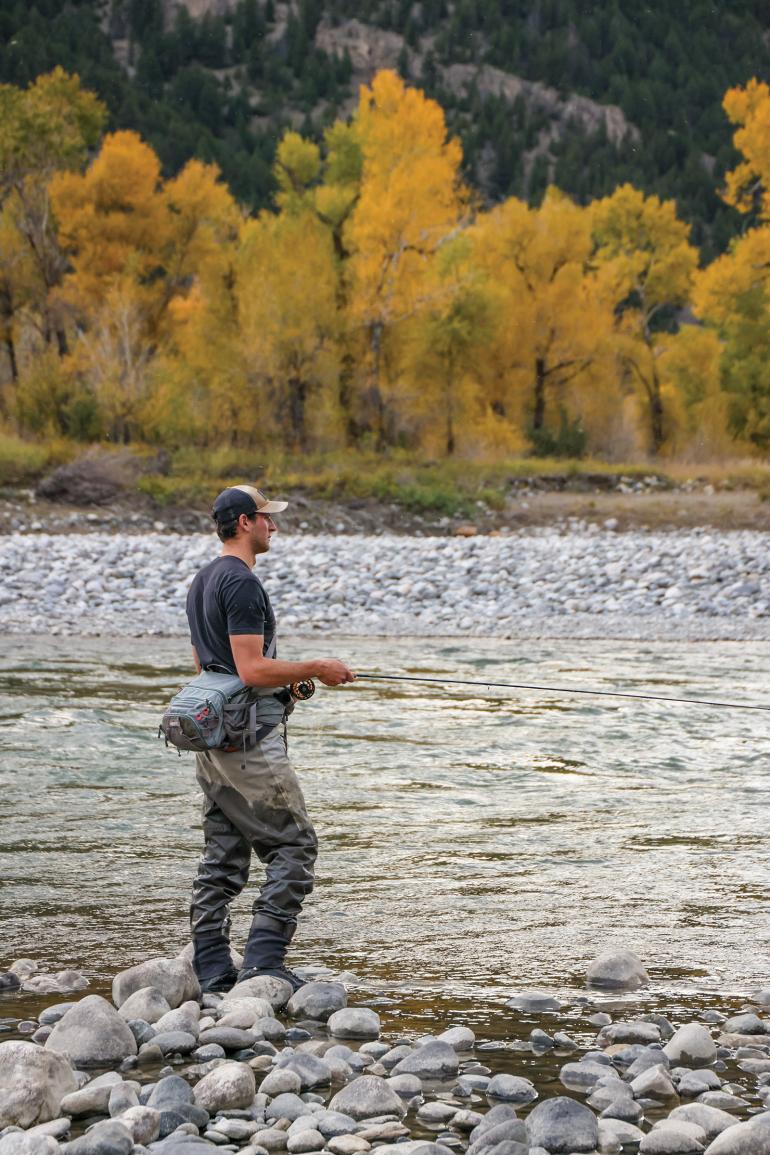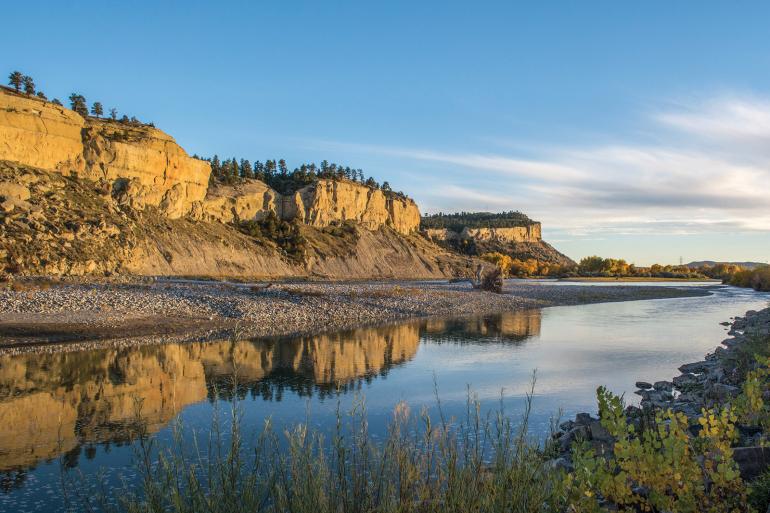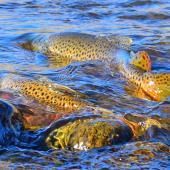Lower Yellowstone: Big Water, Big Fish
Unlocking a less-floated section of the Yellowstone.
As the Yellowstone River flows past Livingston and makes its way towards the Great Plains of North Dakota, the river changes dramatically. Currents slow down; the river widens out and gets deeper. The stunning Absaroka and Gallatin ranges fade into the distance, giving way to rolling hills dotted with sagebrush, willow trees, and roaming herds of antelope and mule deer. This beautiful 75-mile stretch of river between Livingston and Columbus is a favorite of many fly anglers, for beneath its rippling surface, giants lurk. The lower Yellowstone stands out to many local anglers as their best chance to land a trophy trout. The bigger water allows fish to spread out, giving them plenty of room to grow. While this can make it challenging to find fish, anglers who fish the lower Yellowstone know that in every deep hole, on top of every gravel-strewn flat, and behind every boulder, could be the trout of a lifetime.
Access
Public access sites are available around every 10 miles of the lower Yellowstone. These sites include both boat launches and roadside pullovers. Finding them is easy enough by either taking I-90 or the accompanying frontage road that also parallels to the river. The areas closer to Livingston are more serpentine, full of side-channels and backwaters that can be stacked with feeding trout. The sections downstream past the Springdale access are more open with lots of deep holes and long runs—ideal places for big trout to hide.
Flows
Flows on the lower Yellowstone vary greatly by season, and there are advantages to both high and low water. After runoff, when the river becomes fishable (usually sometime in late June or early July), flows are usually stable between 8,000cfs and 10,000cfs. Fish are pushed tight to the shore, making it a great time for anglers to cast along the bank edges. However, as flows drop into the 6,000-7,000cfs range in mid-summer, the trout spread out. Fish can still be found along the bank edges, but many move to the center of the river to hold in pockets and pools, and around structures like boulder gardens and log jams. When the flows begin to drop below 3,000cfs, fish concentrate in the deepest holes, meaning that anglers may have a hard time finding fish unless they’re covering a lot of water. Yet, this also means that when anglers do find fish in a section of water, they’ll find a lot of them. It should be noted that when low-flow periods occur in late summer, water temperatures can rise drastically. During times when water temps are nearing or above the 70-degree mark, it’s best to avoid the river altogether so the fish aren’t put under extra stress.
When to Go
The best times to fish the lower Yellowstone depend entirely on angler preference. In the early, pre-runoff season of March and April, the river is running low, clear, and cold. Fishing can be excellent during this time, with small insects like midges and blue-winged olives beginning to emerge, and small black stoneflies just starting to get more active. Once runoff begins in late May, the river becomes unfishable. However, immediately after water levels drop, the fishing can be absolutely outstanding, with stonefly hatches beginning and the fish becoming extremely aggressive. Post runoff is a great time for casting large dry flies and streamers against the banks, with trout often hammering a fly as soon as it hits the water.
Mid-summer on the lower Yellowstone means the coming of the hoppers. Every year thousands of these terrestrial insects emerge along the river’s banks, where they hop off rocks and pounce off grass stems and overhanging tree branches in unwise attempts to cross the river. The fish feed recklessly during this time, and will strike hard at any little splash on the surface of the water, just in case it’s a wayward hopper.
Early fall sees a shift in the trout’s diet with mayflies and caddisflies moving to the top of the menu. Then, in late fall and early winter, streamers become the most effective option on the lower Yellowstone. This can be a prime time to catch a true monster, as the drop in water temperatures puts big fish on the hunt for large meals before freeze-up.
Fish
The true prizes of the lower Yellowstone are the brown trout, with high populations of the predatory fish haunting the pools and runs throughout the entire section of river. Though they can be finicky, with plenty of forage and room to grow, many of the lower Yellowstone’s browns grow to more than 25 inches—a trophy in any angler’s book. Sharing the water with the browns are high populations of rainbows and whitefish along with a few Yellowstone cutthroat and hybrid cutbows. All of these fish are extremely partial to dry flies and tend to stack up in slower currents to feed heavily on insects passing overhead. When anglers find these pods of fish, they can have good topwater action from dawn to dusk.
Row vs. Wade
While wade fishing is possible on the lower Yellowstone, rowing is definitely the more effective strategy. With fish being so spread out, covering water is almost essential for finding and staying on top of the trout. Access points with boat launches are fairly close together, giving anglers plenty of options for floats. Wade fishermen on the Yellowstone still have plenty of water to fish, especially if they’re willing to walk. Thanks to Montana’s venerable stream-access law, all rivers are open to the public, within the confines of normal high-water marks. This means that anglers are free to walk up- or downstream from any access point and can fish as much water as they want, so long as they adhere to the high-water-mark rule. As covering water is the name of the game on the lower Yellowstone, wading anglers will do well making long drifts with dry flies as well as with nymphs rigged beneath indicators. Techniques like swinging streamers and soft hackles on long, single-hand rods or trout spey equipment can also be quite effective in this area as well.
Regs
While catch-and-release fishing is always encouraged, keeping a few fish for the frying pan is allowed on the lower Yellowstone. Always consult the rules and regulations on the Montana Fish, Wildlife & Parks website before fishing to be certain of bag limits and closures.
Getting There
From Bozeman, take I-90 east to Livingston for the Carter’s Bridge and Mayor’s Landing access points, which bookend the “town stretch.” Otherwise, continue east on I-90 toward Big Timber and Columbus. Access points are available at almost all of the exits.
Kubie Brown is an outdoor guide and writer living in southwest Montana.













